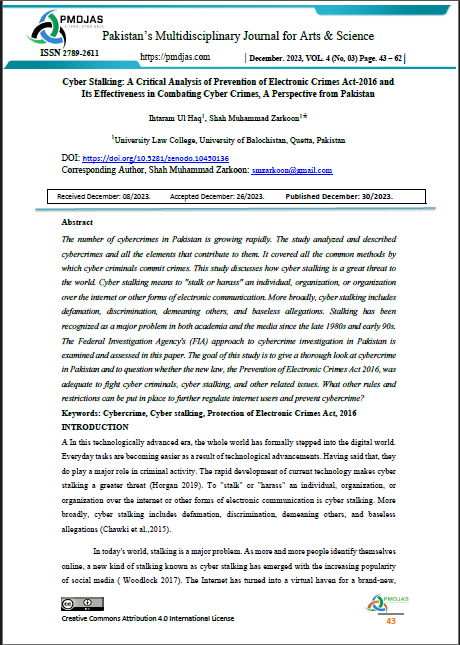Cyber Stalking: A Critical Analysis of Prevention of Electronic Crimes Act-2016 and Its Effectiveness in Combating Cyber Crimes, A Perspective from Pakistan
DOI:
https://doi.org/10.5281/zenodo.10450177Keywords:
Cybercrime, Cyber Stalking, Protection of Electronic Crimes Act, 2016Abstract
The number of cybercrimes in Pakistan is growing rapidly. The study analyzed and described cybercrimes and all the elements that contribute to them. It covered all the common methods by which cyber criminals commit crimes. This study discusses how cyber stalking is a great threat to the world. Cyber stalking means to "stalk or harass" an individual, organization, or organization over the internet or other forms of electronic communication. More broadly, cyber stalking includes defamation, discrimination, demeaning others, and baseless allegations. Stalking has been recognized as a major problem in both academia and the media since the late 1980s and early 90s. The Federal Investigation Agency's (FIA) approach to cybercrime investigation in Pakistan is examined and assessed in this paper. The goal of this study is to give a thorough look at cybercrime in Pakistan and to question whether the new law, the Prevention of Electronic Crimes Act 2016, was adequate to fight cyber criminals, cyber stalking, and other related issues. What other rules and restrictions can be put in place to further regulate internet users and prevent cybercrime?
Downloads






